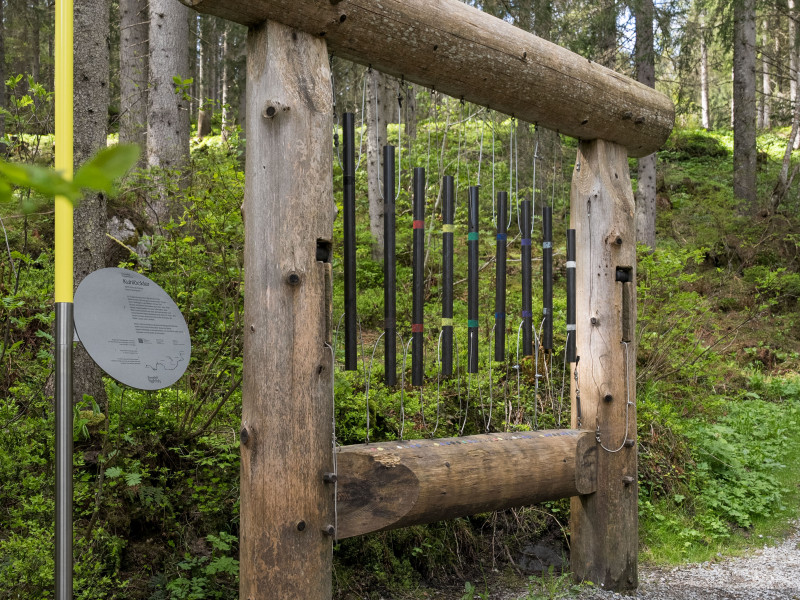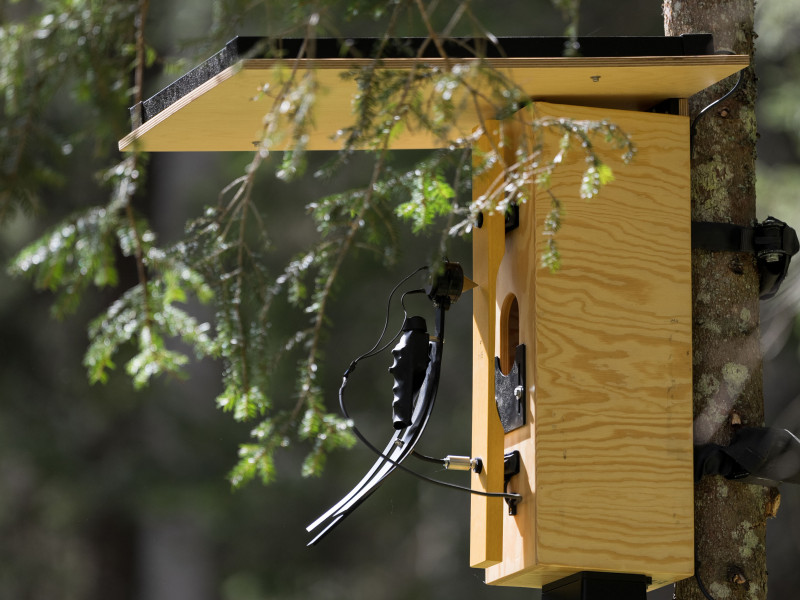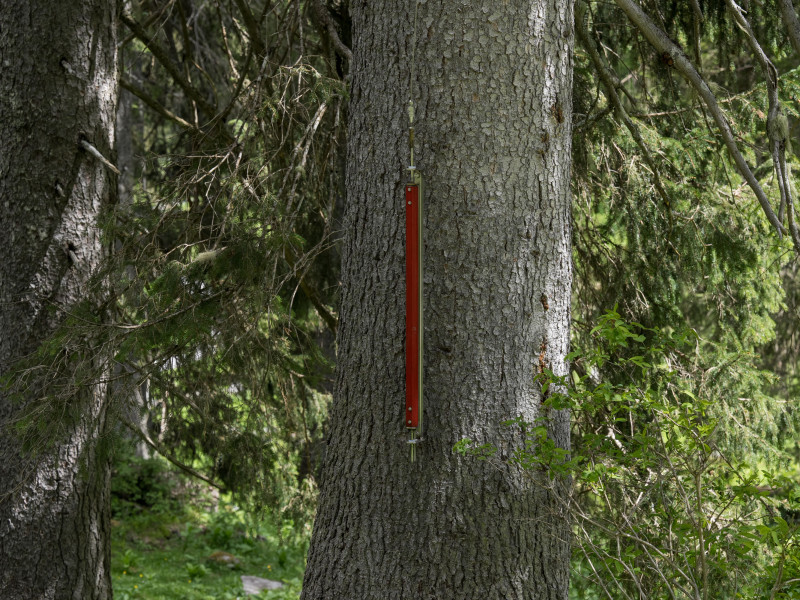
The sound sculpture Einklang – Nachklang (Harmony – Resonance) is one of the instruments in the Classic Edition of the sound trail that has fascinated visitors from the very beginning. The popular tubular gong, with its two-metre-high wooden steles, is located right at the start of the sound trail and offers more than just an acoustic phenomenon.
Sound as a physical experience
The sound of the three wooden steles, each with a metal tube suspended from it, can be experienced physically with its low frequencies. The metal tubes are tuned to the 6th, 7th and 8th tone of the natural harmonic series in A: E (81 hertz), between F sharp and G (94.5 hertz) and A (108 hertz). When they are struck, their sound permeates and fills the immediate surroundings and sets other bodies in vibration – including humans and animals. Thanks to the resonating wooden body, the reverberation of the tubular gongs lasts for up to 10 minutes and can be felt long afterwards. When all three tubular gongs are struck at the same time, a kind of sound bath is created in the centre between the three tubular gongs. Anyone standing here is in a sound space in which vibrations continuously come from three sides and can be felt throughout the body.
How does sound affect us?
I want people to be able to experience sound with as many of their senses as possible, because sound is not only perceived by hearing.
For the musician and creator Wolfgang Deinert, an experience of sound beyond the ears is crucial. What is sound? How does sound work? How do people perceive sound? He has been dealing with such questions since the late 1980s, when his son lost his hearing due to an illness. Today, this preoccupation can be seen in much of his work. His sound objects always allow sound to be experienced with the body and multiple senses, and they create awareness for this effect.
About the artist
Wolfgang Deinert lives and works in Germany and runs the Klangfarben Studio für Klangkörper in Ebersberg. For over two decades, he has been making extraordinary sound objects there – they can be found not only as sound sculptures on the Toggenburg sound trail, but also in clinics, thermal baths, parks and gardens, where they are used for therapeutic purposes. www.wolfklang.de
wolfklang.de ↗

